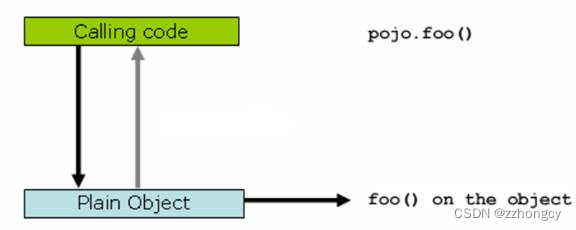1、注释介绍 @Cacheable、@CachePut、@CacheEvict
spring cache 主要使用3个注释标签,即 @Cacheable、@CachePut 和 @CacheEvict,我们总结一下其作用和配置方法。
表 1. @Cacheable 作用和配置方法
| @Cacheable 的作用 | 主要针对方法配置,能够根据方法的请求参数对其结果进行缓存 | |
|---|---|---|
| @Cacheable 主要的参数 | ||
| value | 缓存的名称,在 spring 配置文件中定义,必须指定至少一个 | 例如: @Cacheable(value=”mycache”) 或者 @Cacheable(value={”cache1”,”cache2”} |
| key | 缓存的 key,可以为空,如果指定要按照 SpEL 表达式编写,如果不指定,则缺省按照方法的所有参数进行组合 | 例如: @Cacheable(value=”testcache”,key=”#userName”) |
| condition | 缓存的条件,可以为空,使用 SpEL 编写,返回 true 或者 false,只有为 true 才进行缓存 | 例如: @Cacheable(value=”testcache”,condition=”#userName.length()>2”) |
实例
@Cacheable(value=”accountCache”),这个注释的意思是,当调用这个方法的时候,会从一个名叫 accountCache 的缓存中查询,如果没有,则执行实际的方法(即查询数据库),并将执行的结果存入缓存中,否则返回缓存中的对象。这里的缓存中的 key 就是参数 userName,value 就是 Account 对象。“accountCache”缓存是在 spring*.xml 中定义的名称。
@Cacheable(value="accountCache")// 使用了一个缓存名叫 accountCache
public Account getAccountByName(String userName) {
// 方法内部实现不考虑缓存逻辑,直接实现业务
System.out.println("real query account."+userName);
return getFromDB(userName);
}表 2. @CachePut 作用和配置方法
| @CachePut 的作用 | 主要针对方法配置,能够根据方法的请求参数对其结果进行缓存,和 @Cacheable 不同的是,它每次都会触发真实方法的调用 | |
|---|---|---|
| @CachePut 主要的参数 | ||
| value | 缓存的名称,在 spring 配置文件中定义,必须指定至少一个 | 例如: @Cacheable(value=”mycache”) 或者 @Cacheable(value={”cache1”,”cache2”} |
| key | 缓存的 key,可以为空,如果指定要按照 SpEL 表达式编写,如果不指定,则缺省按照方法的所有参数进行组合 | 例如: @Cacheable(value=”testcache”,key=”#userName”) |
| condition | 缓存的条件,可以为空,使用 SpEL 编写,返回 true 或者 false,只有为 true 才进行缓存 | 例如: @Cacheable(value=”testcache”,condition=”#userName.length()>2”) |
表 3. @CacheEvict 作用和配置方法
| @CachEvict 的作用 | 主要针对方法配置,能够根据一定的条件对缓存进行清空 | |
|---|---|---|
| @CacheEvict 主要的参数 | ||
| value | 缓存的名称,在 spring 配置文件中定义,必须指定至少一个 | 例如: @CachEvict(value=”mycache”) 或者 @CachEvict(value={”cache1”,”cache2”} |
| key | 缓存的 key,可以为空,如果指定要按照 SpEL 表达式编写,如果不指定,则缺省按照方法的所有参数进行组合 | 例如: @CachEvict(value=”testcache”,key=”#userName”) |
| condition | 缓存的条件,可以为空,使用 SpEL 编写,返回 true 或者 false,只有为 true 才清空缓存 | 例如: @CachEvict(value=”testcache”, condition=”#userName.length()>2”) |
| allEntries | 是否清空所有缓存内容,缺省为 false,如果指定为 true,则方法调用后将立即清空所有缓存 | 例如: @CachEvict(value=”testcache”,allEntries=true) |
| beforeInvocation | 是否在方法执行前就清空,缺省为 false,如果指定为 true,则在方法还没有执行的时候就清空缓存,缺省情况下,如果方法执行抛出异常,则不会清空缓存 | 例如: @CachEvict(value=”testcache”,beforeInvocation=true)/2、 |
实例:
@CacheEvict(value="accountCache",key="#account.getName()")// 清空accountCache 缓存
public void updateAccount(Account account) {
updateDB(account);
}
@CacheEvict(value="accountCache",allEntries=true)// 清空accountCache 缓存
public void reload() {
reloadAll()
}
// 缓存名叫 accountCache
@Cacheable(value="accountCache",condition="#userName.length() <=4")
public Account getAccountByName(String userName) {
// 方法内部实现不考虑缓存逻辑,直接实现业务
return getFromDB(userName);
}
@CacheConfig
所有的@Cacheable()里面都有一个value=“xxx”的属性,这显然如果方法多了,写起来也是挺累的,如果可以一次性声明完 那就省事了。
所以,有了@CacheConfig这个配置,@CacheConfig is a class-level annotation that allows to share the cache names,如果你在你的方法写别的名字,那么依然以方法的名字为准。
@CacheConfig("books")
public class BookRepositoryImpl implements BookRepository
{
@Cacheable
public Book findBook(ISBN isbn) {...}
}条件缓存
下面提供一些常用的条件缓存
//@Cacheable将在执行方法之前( #result还拿不到返回值)判断condition,如果返回true,则查缓存;
@Cacheable(value = "user", key = "#id", condition = "#id lt 10")
public User conditionFindById(final Long id)
//@CachePut将在执行完方法后(#result就能拿到返回值了)判断condition,如果返回true,则放入缓存;
@CachePut(value = "user", key = "#id", condition = "#result.username ne 'zhang'")
public User conditionSave(final User user)
//@CachePut将在执行完方法后(#result就能拿到返回值了)判断unless,如果返回false,则放入缓存;(即跟condition相反)
@CachePut(value = "user", key = "#user.id", unless = "#result.username eq 'zhang'")
public User conditionSave2(final User user)
//@CacheEvict, beforeInvocation=false表示在方法执行之后调用(#result能拿到返回值了);且判断condition,如果返回true,则移除缓存;
@CacheEvict(value = "user", key = "#user.id", beforeInvocation = false, condition = "#result.username ne 'zhang'")
public User conditionDelete(final User user)@Caching
有时候我们可能组合多个Cache注解使用;比如用户新增成功后,我们要添加id–>user;username—>user;email—>user的缓存;此时就需要@Caching组合多个注解标签了。
@Caching(put = {
@CachePut(value = "user", key = "#user.id"),
@CachePut(value = "user", key = "#user.username"),
@CachePut(value = "user", key = "#user.email")
})
public User save(User user) {
}自定义缓存注解
比如之前的那个@Caching组合,会让方法上的注解显得整个代码比较乱,此时可以使用自定义注解把这些注解组合到一个注解中,如:
@Caching(put = {
@CachePut(value = "user", key = "#user.id"),
@CachePut(value = "user", key = "#user.username"),
@CachePut(value = "user", key = "#user.email")
})
@Target({ElementType.METHOD, ElementType.TYPE})
@Retention(RetentionPolicy.RUNTIME)
@Inherited
public @interface UserSaveCache {
} 这样我们在方法上使用如下代码即可,整个代码显得比较干净。@UserSaveCache public User save(User user)
2、基本原理
和 spring 的事务管理类似,spring cache 的关键原理就是 spring AOP,通过 spring AOP,其实现了在方法调用前、调用后获取方法的入参和返回值,进而实现了缓存的逻辑。我们来看一下下面这个图:

上图显示,当客户端“Calling code”调用一个普通类 Plain Object 的 foo() 方法的时候,是直接作用在 pojo 类自身对象上的,客户端拥有的是被调用者的直接的引用。
而 Spring cache 利用了 Spring AOP 的动态代理技术,即当客户端尝试调用 pojo 的 foo()方法的时候,给他的不是 pojo 自身的引用,而是一个动态生成的代理类

如上图所示,这个时候,实际客户端拥有的是一个代理的引用,那么在调用 foo() 方法的时候,会首先调用 proxy 的 foo() 方法,这个时候 proxy 可以整体控制实际的 pojo.foo() 方法的入参和返回值,比如缓存结果,比如直接略过执行实际的 foo() 方法等,都是可以轻松做到的。
3、问题:@Cacheable注解不支持配置过期时间
@Cacheable注解不支持配置过期时间,所有需要通过配置CacheManneg来配置默认的过期时间和针对每个类或者是方法进行缓存失效时间配置。
4.1 解决
可以采用如下的配置信息来解决的设置失效时间问题修改配置类
import com.fasterxml.jackson.annotation.JsonAutoDetect;
import com.fasterxml.jackson.annotation.PropertyAccessor;
import com.fasterxml.jackson.databind.ObjectMapper;
import org.springframework.cache.CacheManager;
import org.springframework.cache.annotation.EnableCaching;
import org.springframework.context.annotation.Bean;
import org.springframework.context.annotation.Configuration;
import org.springframework.data.redis.cache.RedisCacheConfiguration;
import org.springframework.data.redis.cache.RedisCacheManager;
import org.springframework.data.redis.cache.RedisCacheWriter;
import org.springframework.data.redis.connection.RedisConnectionFactory;
import org.springframework.data.redis.core.RedisTemplate;
import org.springframework.data.redis.serializer.Jackson2JsonRedisSerializer;
import org.springframework.data.redis.serializer.RedisSerializationContext;
import java.io.Serializable;
import java.time.Duration;
import java.util.HashMap;
import java.util.Map;
/**
*/
@Configuration
@EnableCaching
public class RedisConfig implements Serializable {
/**
* 申明缓存管理器,会创建一个切面(aspect)并触发Spring缓存注解的切点(pointcut)
* 根据类或者方法所使用的注解以及缓存的状态,这个切面会从缓存中获取数据,将数据添加到缓存之中或者从缓存中移除某个值
*/
/* @Bean
public RedisCacheManager cacheManager(RedisConnectionFactory redisConnectionFactory) {
return RedisCacheManager.create(redisConnectionFactory);
}
@Bean
public RedisTemplate redisTemplate(RedisConnectionFactory factory) {
// 创建一个模板类
RedisTemplate<String, Object> template = new RedisTemplate<String, Object>();
// 将刚才的redis连接工厂设置到模板类中
template.setConnectionFactory(factory);
// 设置key的序列化器
template.setKeySerializer(new StringRedisSerializer());
// 设置value的序列化器
//使用Jackson 2,将对象序列化为JSON
Jackson2JsonRedisSerializer jackson2JsonRedisSerializer = new Jackson2JsonRedisSerializer(Object.class);
//json转对象类,不设置默认的会将json转成hashmap
ObjectMapper om = new ObjectMapper();
om.setVisibility(PropertyAccessor.ALL, JsonAutoDetect.Visibility.ANY);
om.enableDefaultTyping(ObjectMapper.DefaultTyping.NON_FINAL);
jackson2JsonRedisSerializer.setObjectMapper(om);
template.setValueSerializer(jackson2JsonRedisSerializer);
return template;
}*/
/**
* 最新版,设置redis缓存过期时间
*/
@Bean
public RedisCacheManager cacheManager(RedisConnectionFactory redisConnectionFactory) {
return new RedisCacheManager(
RedisCacheWriter.nonLockingRedisCacheWriter(redisConnectionFactory),
this.getRedisCacheConfigurationWithTtl( 60), // 默认策略,未配置的 key 会使用这个
this.getRedisCacheConfigurationMap() // 指定 key 策略
);
}
private Map<String, RedisCacheConfiguration> getRedisCacheConfigurationMap() {
Map<String, RedisCacheConfiguration> redisCacheConfigurationMap = new HashMap<>();
//SsoCache和BasicDataCache进行过期时间配置
redisCacheConfigurationMap.put("messagCache", this.getRedisCacheConfigurationWithTtl(30 * 60));
//自定义设置缓存时间
redisCacheConfigurationMap.put("userCache", this.getRedisCacheConfigurationWithTtl(60));
return redisCacheConfigurationMap;
}
private RedisCacheConfiguration getRedisCacheConfigurationWithTtl(Integer seconds) {
Jackson2JsonRedisSerializer<Object> jackson2JsonRedisSerializer = new Jackson2JsonRedisSerializer<>(Object.class);
ObjectMapper om = new ObjectMapper();
om.setVisibility(PropertyAccessor.ALL, JsonAutoDetect.Visibility.ANY);
om.enableDefaultTyping(ObjectMapper.DefaultTyping.NON_FINAL);
jackson2JsonRedisSerializer.setObjectMapper(om);
RedisCacheConfiguration redisCacheConfiguration = RedisCacheConfiguration.defaultCacheConfig();
redisCacheConfiguration = redisCacheConfiguration.serializeValuesWith(
RedisSerializationContext
.SerializationPair
.fromSerializer(jackson2JsonRedisSerializer)
).entryTtl(Duration.ofSeconds(seconds));
return redisCacheConfiguration;
}
}4.2 测试
- 设置缓存名称及缓存时间(如下为60秒)
redisCacheConfigurationMap.put("userCache",this.getRedisCacheConfigurationWithTtl(60));
复制代码- 使用 加上注解即可
@Cacheable("userCache") - 注:名称为配置类里面设置的名称userCache,可设置多个缓存名称及时间
- 注意:使用@CacheEvict注解的方法必须是controller层直接调用,service里间接调用不生效。@CacheEvict的方法和@Cache的方法放到一个java文件中写,他俩在两个java文件的话,会导致@CacheEvict失效。Redirecting...
使用spring时@Cacheable在service层失效的一种情况
原因:
我是通过配置文件来注入bean对象的,而启动时扫描配置文件是有顺序的,当service层的对象已经初始化之后,而cacheManager对象还没有初始化时,这时service对象只是普通的bean对象,而不是代理对象,因此不能AOP,即缓存失效。
解决方法:
配置文件顺序改变一下,先让cacheManager对象初始化,这时再初始化service层对象时就会包装成代理对象,就可以在service层使用缓存了。
在spring中使用ehcache时出现了 @Cacheable不起作用的情况。
1.返回的结果bean对象必须 实现Serializable接口
public class UserEntity implements Serializable {
}
2.在同一个类中方法A内部调用有注解的方法B,方法B不走缓存的
原因就是上面说的,使用@Cacheable添加缓存实际上就是使用动态代理做的,在代理的方法前后做缓存的相应处理。这样一来,单独的去调方法B是有缓存的,但是如果调方法A,A里面再去调B方法,哪怕B方法配置了缓存,也是不会生效的
解决方法:
- 1)、不使用注解的方式,直接取 Ehcache 的 CacheManger 对象,把需要缓存的数据放到里面,类似于使用 Map,缓存的逻辑自己控制
- 2)、把方法A和方法B放到两个不同的类里面,例如:如果两个方法都在service接口里,把方法B放到另一个service里面,这样A方法里调B方法,就可以使用B方法的缓存
Controller测试类
import com.ml.demo.dao.UserDao;
import com.ml.demo.entity.User;
import org.springframework.cache.annotation.CacheEvict;
import org.springframework.cache.annotation.CachePut;
import org.springframework.cache.annotation.Cacheable;
import org.springframework.web.bind.annotation.RequestMapping;
import org.springframework.web.bind.annotation.RequestParam;
import org.springframework.web.bind.annotation.RestController;
import javax.annotation.Resource;
import java.io.Serializable;
/**
*/
@RestController
public class testController implements Serializable {
@Resource
private UserDao userDao;
/**
* 查询出一条数据并且添加到缓存
*
* @param userId
* @return
*/
@RequestMapping("/getUser")
@Cacheable("userCache")
public User getUser(@RequestParam(required = true) String userId) {
System.out.println("如果没有缓存,就会调用下面方法,如果有缓存,则直接输出,不会输出此段话");
return userDao.getUser(Integer.parseInt(userId));
}
/**
* 删除一个缓存
*
* @param userId
* @return
*/
@RequestMapping(value = "/deleteUser")
@CacheEvict("userCache")
public String deleteUser(@RequestParam(required = true) String userId) {
return "删除成功";
}
/**
* 添加一条保存的数据到缓存,缓存的key是当前user的id
*
* @param user
* @return
*/
@RequestMapping("/saveUser")
@CachePut(value = "userCache", key = "#result.userId +''")
public User saveUser(User user) {
return user;
}
/**
* 返回结果userPassword中含有nocache字符串就不缓存
*
* @param userId
* @return
*/
@RequestMapping("/getUser2")
@CachePut(value = "userCache", unless = "#result.userPassword.contains('nocache')")
public User getUser2(@RequestParam(required = true) String userId) {
System.out.println("如果走到这里说明,说明缓存没有生效!");
User user = new User(Integer.parseInt(userId), "name_nocache" + userId, "nocache");
return user;
}
@RequestMapping("/getUser3")
@Cacheable(value = "userCache", key = "#root.targetClass.getName() + #root.methodName + #userId")
public User getUser3(@RequestParam(required = true) String userId) {
System.out.println("如果第二次没有走到这里说明缓存被添加了");
return userDao.getUser(Integer.parseInt(userId));
}
}
参考:
https://juejin.im/post/5ca07a98f265da30933fc4c4























 1万+
1万+











 被折叠的 条评论
为什么被折叠?
被折叠的 条评论
为什么被折叠?








